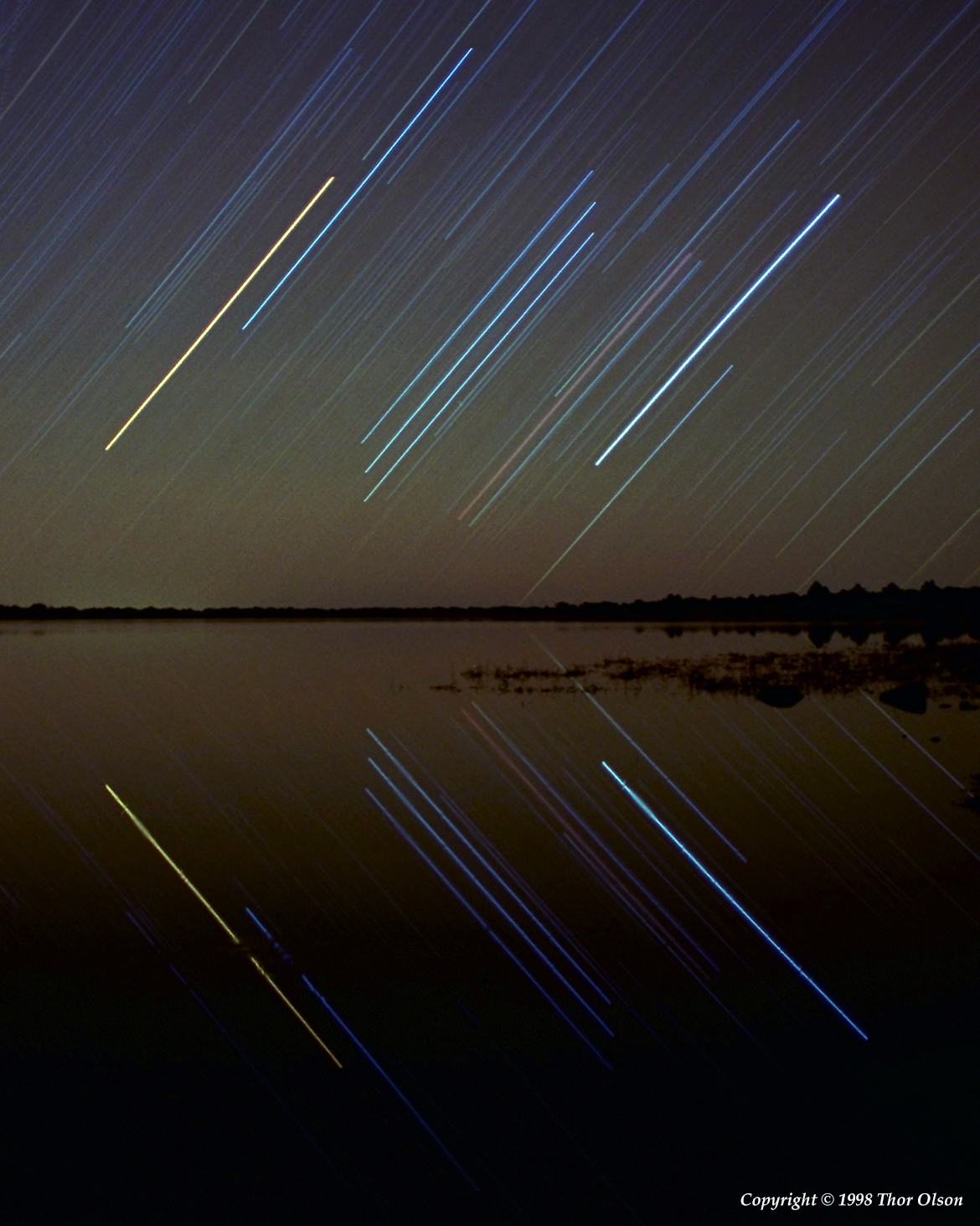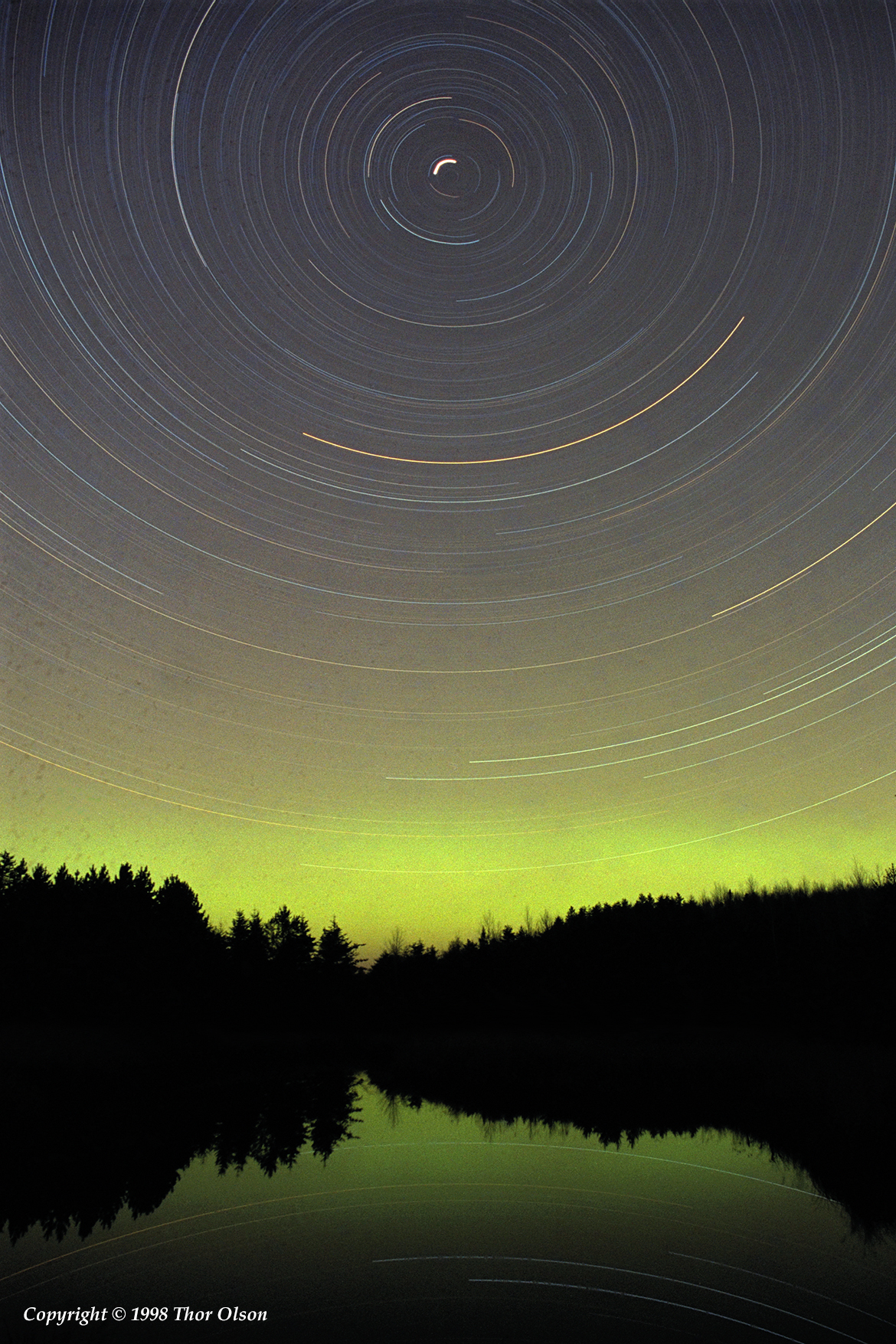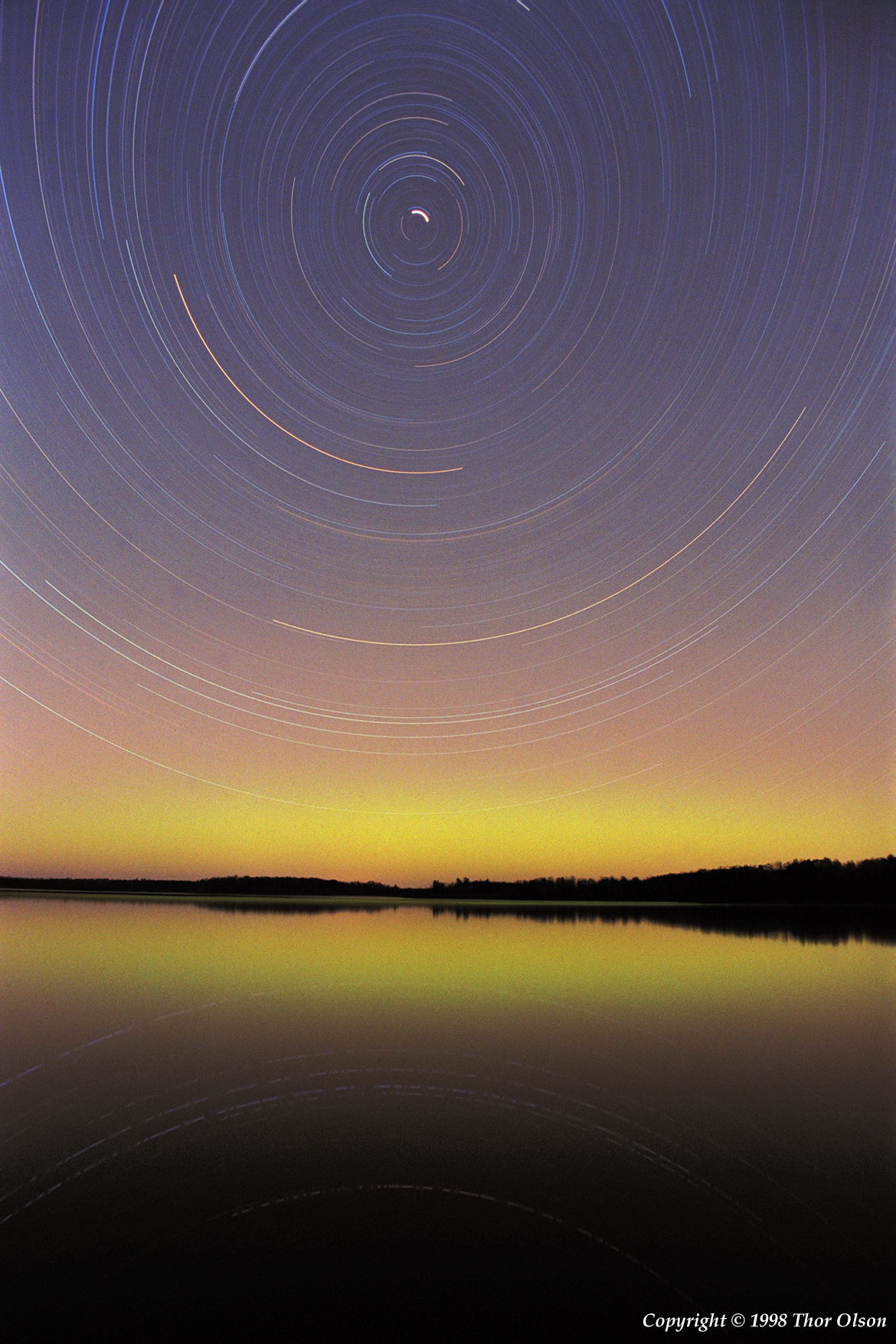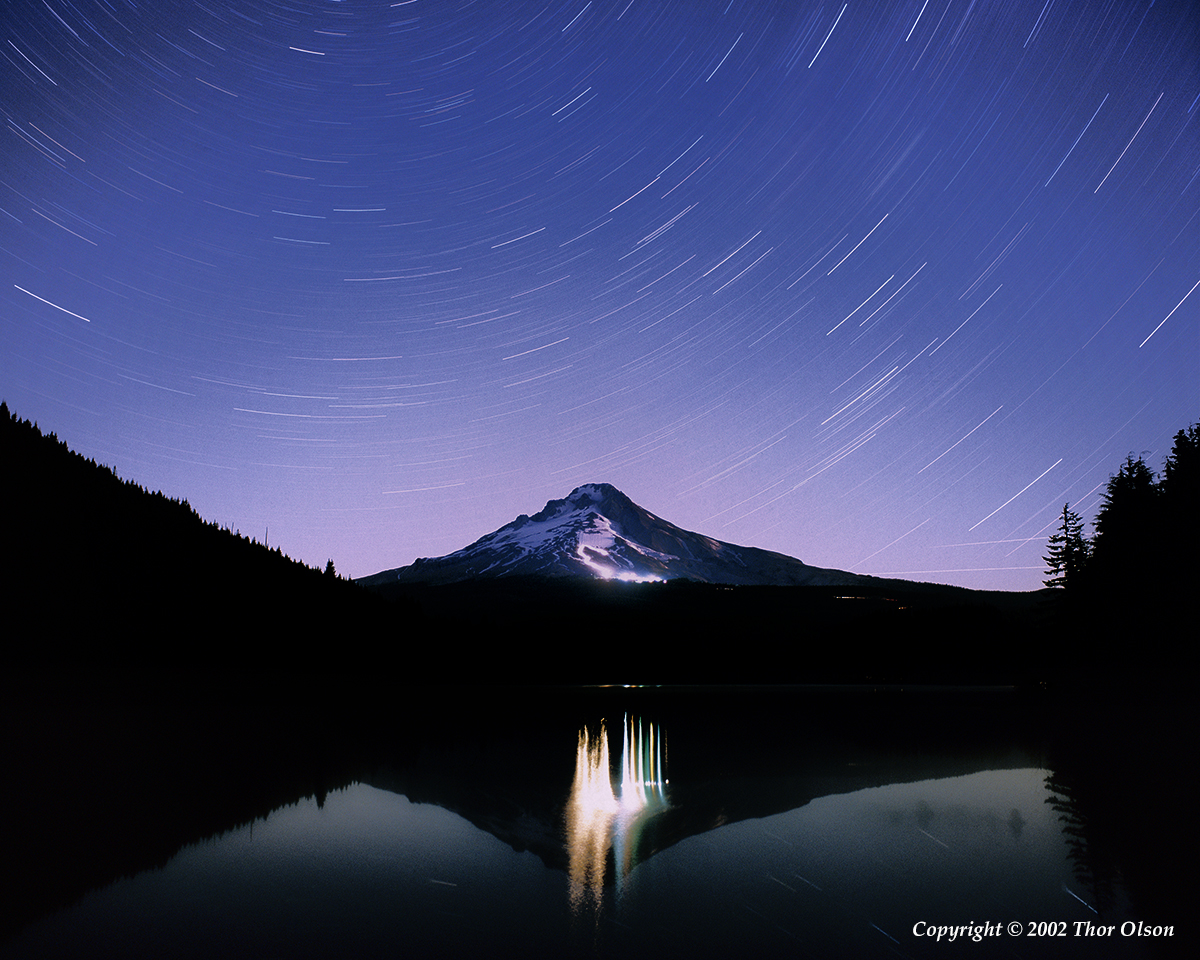Mike eventually left me to the finicky procedure of finding the focus. It took another thirty minutes by the time I was satisfied. I had several targets I wanted to shoot this night, and the first one was M80 and M81, a pair of galaxies that could fit in a single view, faint swirls of light framed by the foreground stars of the Big Dipper. I attached the camera back, connected the cable release, started my timer, held my breath, and tripped the shutter. It was midnight, and I was catching my first photons!
I now had a moment to break from my equipment-demanded trance. From my position at the top of the boat ramp, I had a great view of the lake, its island silhouetted in the surround of the mirrored sky. At the shore I could make out my fixed camera tripods, a small indicator light showing the nearby battery packs powering the dew heaters that kept the lens clear from condensation. All of my film was now open to the sky, each exposed frame collecting the faint trickle of photons gathered by lenses and mirrors.
There was nothing for me to do! I gazed across the lake in a state of unexpected idleness. I wondered what my cameras at the lake were recording. I had intended to leave them open all night, but now that the lake surface was so calm, should I start over? I started to mentally compose other shots. I could reposition the cameras. Should I? Or should I do something else, like change the lens aperture? Or should I just re-shoot the scene with the exact same settings, trying to build insurance that one of the frames will turn out?
Continue reading




